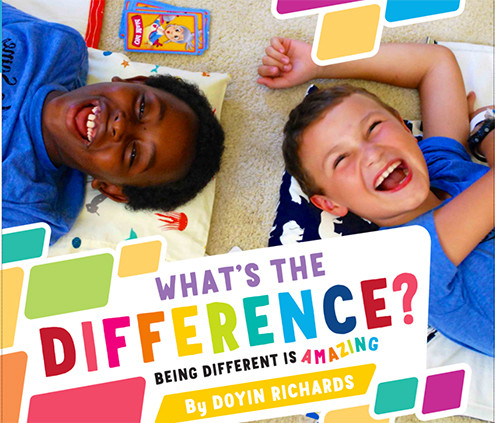Reading in colour
I want you to see me
Books are an invaluable tool that can be used for teaching children from an early age about ethnic and cultural differences. The messages children are exposed to through books shape their ideas about themselves and others.

Supplied photo
It is through early reading (and for infants and toddlers, looking at the colourful images in their storybooks) that children begin to form perspectives on who matters. When certain groups are not depicted in children’s literature, those groups may become invisible to children.
In order to foster accurate learning and positive attitudes toward diversity, it is crucial to be intentional when selecting books for a child’s home or a classroom library.
Doyin Richards, an African-American father and author, wrote a book for children aged two to 10 titled What’s the Difference?: Being Different is Amazing. Richards’ book aims to support parents in raising racially conscious children. He urges children to recognize the differences between their friends and themselves and see those differences in a positive light.
“Your friends may not look like you, and that’s a good thing,” Richards writes in his book. “You see, little one, you may not be the same on the outside as your friends, but it's what makes you different that makes you wonderful.”
Along with the words on the page, the book includes photographs of children from various ethnic and cultural backgrounds laughing, playing, eating and carrying out other activities together.
Richards discourages shying away from acknowledging racial differences. “Don’t be COLOR-BLIND” he writes. “The sky is blue during the day and black at night. If colours could talk, they could tell different stories about what they see when it's their turn to LIGHT UP THE WORLD”.
Children ask questions all the time (sometimes at the most dreadful moments). If a child asks about the texture of another person’s hair or the attire a passerby is wearing, it is easy to quiet them and find the closest exit.
Instead of silencing children or taking flight, consider using that opportunity as a teaching moment to talk to the child about the race, beliefs and culture of the individual in question. If you don’t have all the answers, be honest with them and suggest going home to research and learn together. Demonstrate to the child that it is okay to ask questions, to be unsure and to be open to learning. Avoiding these kinds of conversations can imply there is something wrong with the person in question, which may only serve to reinforce racial tensions.
Books are a great way to introduce children to race, beliefs, cultures and other differences that can exist between people. While there are many books published that help children understand and embrace diversity, not all books convey accurate information. Being selective about the books that accurately and sensitively portray diversity is critical in fostering the development of woke kids who understand the importance of embracing differences.
The website teach4diversity.ca/multicultural-childrens-literature lists various links to guides to help assess children’s literature.
Valerie Chelangat is a Kenyan-Canadian writer. She loves Winnipeg but struggles with the winter. She gets through the season by reading any books she gets her hands on and drinking too much tea.
Published in Volume 75, Number 06 of The Uniter (October 22, 2020)






